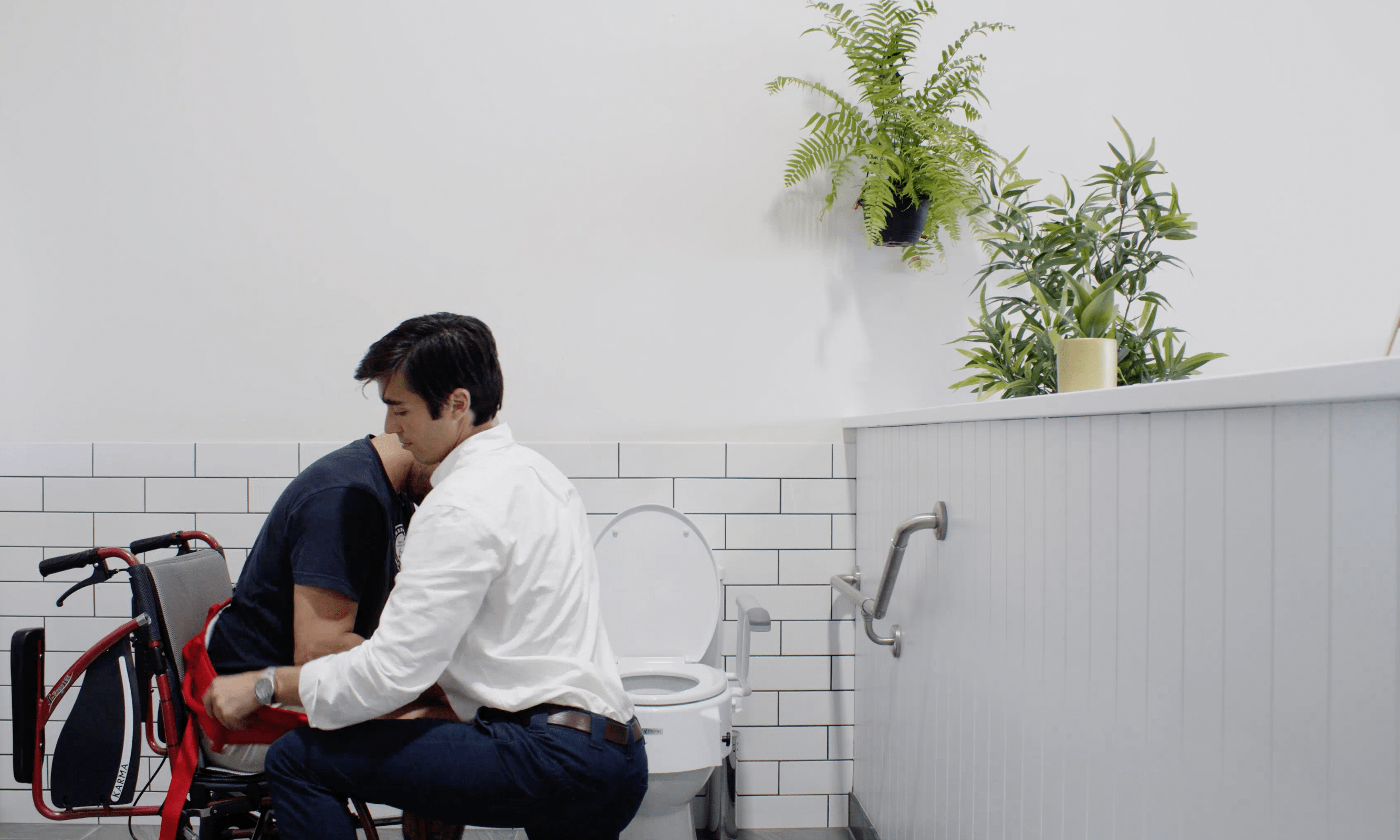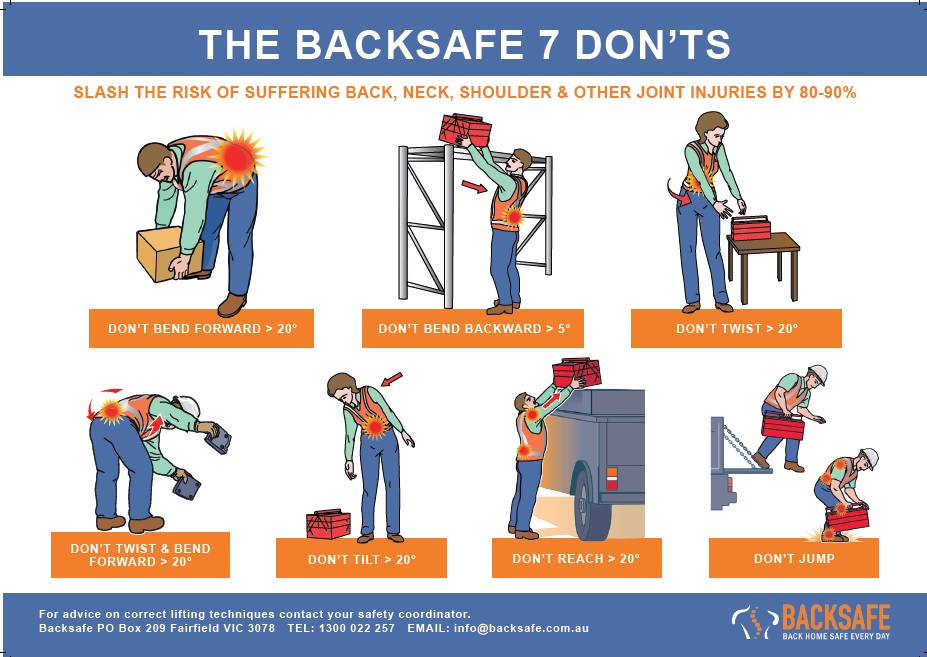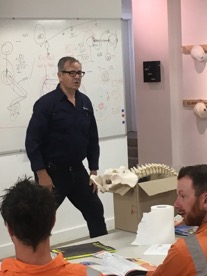In the healthcare industry, proper patient handling techniques are essential for ensuring the safety and well-being of both patients and healthcare workers. Understanding the importance of these techniques and the risks associated with improper handling is crucial for healthcare professionals.
By following basic principles and using appropriate equipment and tools, healthcare workers can lift and transfer patients safely and effectively.
Incorporating injury prevention measures, such as using personal protective equipment and receiving proper training, is vital for maintaining a safe working environment.

Understanding the Importance of Proper Patient Handling
Proper patient handling is an essential skill in the healthcare industry. When healthcare workers use appropriate techniques, injuries to both patients and workers can be significantly reduced.
Moreover, proper handling techniques contribute to patient comfort and dignity, promoting better patient outcomes and higher satisfaction for the patients.
The physical demands of patient handling make it crucial for healthcare workers to prioritise their own well-being and safety.
The Role of Patient Handling in Healthcare
Patient handling plays a critical role in healthcare settings. Whether it’s lifting a patient from a bed to a chair or transferring them onto an examination table, healthcare workers are frequently required to perform physical tasks that involve lifting, transferring, and repositioning patients.
These activities are necessary for providing essential care and treatments. However, they also pose certain risks if not executed properly.
Risks Associated with Improper Patient Handling
Improper patient handling can lead to various adverse outcomes for both patients and healthcare workers.
Patients may experience falls, fractures, muscle strains, and discomfort.
Healthcare workers, on the other hand, may sustain musculoskeletal injuries, such as sprains, strains, and herniated discs.
These injuries can have long-lasting effects on their physical health and may even lead to chronic pain or disability. Additionally, the financial burden resulting from workplace injuries can be significant for healthcare organisations.
One of the most common risks is patient falls. When healthcare workers fail to use proper lifting techniques or underestimate the patient’s weight, the chances of a fall increase significantly.
Not only can falls cause physical injuries, but they can also have a psychological impact on patients, leading to a loss of confidence and increased anxiety.
Another risk that arises from improper patient handling is the potential for fractures. Fractures can occur when patients are not properly supported during transfers or when excessive force is applied during repositioning.
These fractures can be particularly devastating for elderly patients, as their bones tend to be more fragile and prone to injury. In addition to the pain and discomfort experienced by the patient, fractures can also lead to extended hospital stays and increased healthcare costs.
Back Injury Prevention Training
Back injury prevention training is crucial for maintaining overall health and well-being. Understanding the importance of back health is the first step in preventing injuries and promoting a safe working environment.
Understanding the Importance of Back Safety
The spine plays a vital role in supporting the body’s structure and movement. It provides stability and protects the spinal cord, which is responsible for transmitting messages between the body and the brain. Therefore, any injury or damage to the back can have serious implications on a person’s overall health.
The Role of the Spine in Overall Health
The spine consists of a series of vertebrae, which are interconnected by discs and supported by muscles and ligaments. This complex structure enables us to perform various activities, such as walking, bending, and lifting.
It is important to note that maintaining a healthy spine is crucial for overall well-being. Regular exercise, proper posture, and ergonomic practices can help prevent back problems and ensure the spine’s longevity. By taking care of our spine, we are investing in our future mobility and quality of life.
Common Back Injuries and Their Impact
Back injuries can occur due to various reasons, including improper lifting techniques, repetitive movements, poor posture, and accidents. These injuries can range from strains and sprains to more severe conditions, such as herniated discs and spinal fractures. The impact of back injuries can be debilitating, leading to pain, limited mobility, and decreased productivity.
Fundamentals of Back Injury Prevention
Preventing back injuries requires a combination of knowledge, proper techniques, and regular exercise. By following these fundamentals, individuals can minimise the risk of injury and maintain a healthy back.
Understanding the mechanics of the back is essential in injury prevention. Maintaining proper alignment and posture is crucial for reducing strain on the back and preventing injuries.
Principles of Safe Lifting
One of the main causes of back injuries is improper lifting techniques. To prevent injuries, it is essential to follow safe lifting practices, such as bending the knees, keeping the back straight, and using the leg muscles to lift objects. Additionally, using assistive devices, such as dollies or lifting belts, can further reduce the strain on the back.
Furthermore, it is important to assess the weight of the object before lifting and ask for help if it is too heavy. Pushing heavy objects rather than pulling them can also decrease the risk of back injuries.
Importance of Regular Exercise and Stretching
Engaging in regular exercise and stretching routines is crucial for maintaining back health. Exercises that target the core muscles, such as planks and bridges, help strengthen the back and improve stability.
Stretching exercises, such as cat-cow and trunk rotations, enhance flexibility and relieve tension in the back muscles.
In addition to core strengthening exercises, incorporating cardiovascular activities like walking or swimming into your routine can improve overall fitness and help support a healthy back. It is important to listen to your body and avoid overexertion, gradually increasing the intensity of your workouts to prevent strain on the back.
Patient Handling Techniques for Back Injury Prevention
Training techniques play a vital role in educating individuals about back injury prevention and promoting safe practices in the workplace.
Back injuries are a common concern in many industries, often leading to lost productivity and increased healthcare costs.
Employers are increasingly recognising the importance of implementing comprehensive training programs to address these issues and create a safer work environment for their employees.
Backsafes Patient Moving Training is a training program aimed at healthcare workers who want to learn more about patient handling techniques.
Implementing a Back Injury Prevention Program
Developing a formal back injury prevention program within the workplace is critical for ensuring a safe and healthy working environment. Back injuries are among the most common workplace injuries, often resulting from poor ergonomics, improper lifting techniques, and lack of awareness about preventive measures.
Implementing a comprehensive prevention program not only safeguards the well-being of employees but also contributes to increased productivity and reduced healthcare costs for the organisation. By prioritising back injury prevention, companies demonstrate their commitment to employee health and safety.
Training Employees for Prevention
Training plays a vital role in educating employees about back injury prevention measures. Regular training sessions should be conducted to ensure employees are aware of proper lifting techniques, the importance of maintaining good posture, and strategies for reducing ergonomic risks. These training sessions can be conducted through workshops, demonstrations, and online modules, such as Backsafes Patient Moving Training.
Regular evaluation and continuous improvement are essential for maintaining the effectiveness of a back injury prevention program.
Regular Safety Evaluation
Periodically assessing the training program’s effectiveness helps identify areas for improvement and ensure compliance with safety guidelines. Employee feedback, injury data analysis, and observations can provide valuable insights into the staff’s strengths and weaknesses in relation to the back safety program. Based on this information, necessary adjustments and additional training can be implemented to enhance the program’s effectiveness.
Continuous Improvement and Adaptation
Back injury prevention should continuously evolve to address changing work environments, technologies, and best practices. Staying updated with the latest research, guidelines, and industry standards ensures that the prevention program remains relevant and effective in reducing back injuries.
Moreover, it is crucial to involve employees in the process of continuous improvement. By fostering a culture of safety and encouraging open communication, workers are more likely to actively participate in the program and provide valuable feedback for its enhancement.
Ensuring the safety of patients during handling procedures involves a combination of proper training, communication, and the use of appropriate techniques. Healthcare professionals must be well-versed in the principles of body mechanics and ergonomics to prevent musculoskeletal injuries that can result from improper lifting and transferring.
Techniques for Lifting and Transferring Patients

When it comes to lifting and transferring patients, healthcare workers should be well-versed in various techniques. Proper patient handling is crucial to prevent injuries to both patients and healthcare providers.
Healthcare workers must assess the patient’s mobility and weight-bearing capacity before deciding on the appropriate lifting technique. Factors such as the patient’s medical condition, level of cooperation, and the presence of medical devices should also be taken into consideration.
Manual Lifting Techniques
Manual lifting techniques involve using physical effort to lift or move patients. These techniques require proper body mechanics, teamwork, and effective communication among healthcare workers. Examples include the squat lift, the half-kneeling lift, and the golfer’s lift. Each technique should be selected based on the patient’s condition and the available resources.
Assisted Lifting Techniques
In situations where manual lifting may not be feasible or safe, assisted lifting techniques can be employed. These techniques involve the use of assistive devices, such as transfer belts or hoists, to help healthcare workers lift and transfer patients. Assisted lifting techniques minimise the physical strain on healthcare workers while ensuring the patient’s safety and comfort.
Transfer belts are commonly used to assist patients with limited mobility in moving from one surface to another, such as from a bed to a wheelchair. These belts provide a secure grip for healthcare workers to hold onto while guiding the patient’s movement. Hoists, on the other hand, are mechanical devices that lift and transfer patients using a sling or harness. They are particularly useful for patients who are unable to bear weight or require full assistance during transfers.
Training and Education for Safe Patient Handling
Proper training and education regarding safe patient handling techniques are paramount for healthcare workers. Regular training sessions and educational programs equip workers with the necessary knowledge and skills to perform patient handling tasks safely and effectively. Ongoing training ensures that healthcare workers stay up-to-date with the latest guidelines and best practices in the field.
Patient handling techniques are critical for ensuring the safety and well-being of both patients and healthcare workers. Understanding the importance of proper handling, the associated risks, and the basic principles of safe patient handling is crucial for healthcare professionals. By following appropriate techniques, utilising adequate equipment, and implementing injury prevention measures, healthcare workers can provide high-quality care while minimising the risk of injuries. Continued training and education in safe patient handling techniques further enhance the safety and effectiveness of healthcare delivery.
To learn more about Backsafes Patient Moving Training give us a call on 0411 838 033 or at jane@backsafe.com.au




